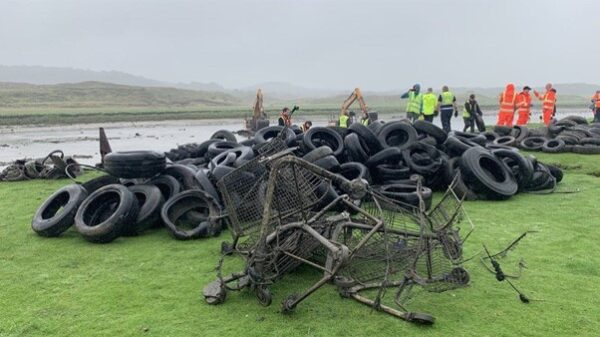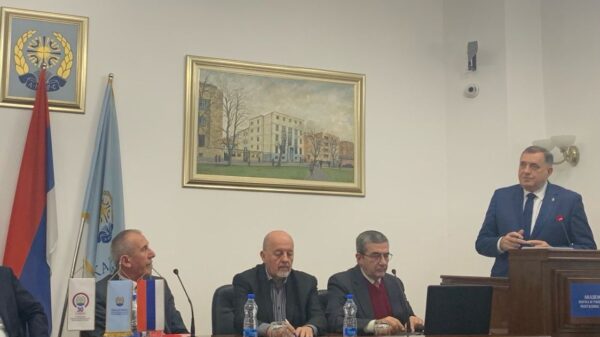By Judith Moritz and Jonathan Coffey, BBC News
When former nurse Lucy Letby was convicted of murdering babies last year, news channels rolled on the story, and her mugshot was splashed across front pages and websites around the world.
The scale of Letby’s crimes, the extreme vulnerability of her victims, and unanswered questions about the nurse all combined to stoke interest in the case.
But this was a saga that was still unfolding. Hospital consultants who’d suspected Letby spoke of the struggles they’d had to be heard. Public outcry quickly led to the announcement of a public inquiry.
Meanwhile, police said they were reviewing the cases of 4,000 admissions of babies into neonatal units at hospitals where Letby worked or trained, and were launching an investigation to establish whether the Countess of Chester Hospital should face criminal charges.
There was blanket coverage. Then the news cycle moved on, and Lucy Letby fell out of the headlines.
But that wasn’t the only reason things went quiet. We can now explain why coverage of Letby’s story has been restricted over the last ten months – and what we haven’t been able to report, until now.
A month after Britain’s most notorious nurse was sentenced to spend the rest of her life in prison, the Crown Prosecution Service (CPS) announced it was seeking a fresh trial.
Letby had been convicted of murdering seven babies and attempting to murder another six at the Countess of Chester Hospital’s neo-natal unit between June 2015 and June 2016. She was acquitted of two counts of attempted murder.
But there were six further charges on which jurors couldn’t decide. Now the CPS said it was intending to run a retrial to put one of those undecided charges before a new jury. The judge quickly imposed a court order prohibiting the reporting of anything that could prejudice the upcoming trial. The result was a virtual news blackout, at least temporarily.
In the background, Letby’s defence team applied for permission to appeal against her convictions. There was no public hearing, and journalists weren’t told about Letby’s grounds for appeal – or the judge’s reasons when they decided to deny her request.
But that wasn’t an end to it – Letby could make one final appeal request, in front of three judges at the Court of Appeal in London – and this time the hearing would take place in public.
Barristers, solicitors, police officers and journalists who’d been involved in the original trial traipsed down to the Royal Courts of Justice. Letby attended remotely, via a video link from a non-descript room in HMP Bronzefield, where she is currently an inmate.
It was the first time we’d seen her since she’d refused to turn up to her sentencing hearing. Her hair had grown, but it was still difficult to read anything from her expression – she maintained the same impassivity as she had during the trial.
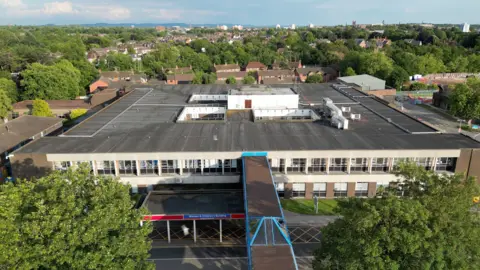
What unfolded in court was fascinating, but had to stay in our notebooks.
Letby’s lawyers claimed her convictions were unsafe, calling into question the science behind the prosecution case, laying into the prosecution’s expert witness, and arguing part of the judge’s directions to the jury had been wrong.
It was the first time since the end of her trial eight months earlier that anyone had heard her team set out its stall – but much of it was familiar to those of us who’d been following the case.
The same attacks on the prosecution’s experts had been made during the course of the trial, and Letby’s lawyers had also previously argued against the judge’s legal directions.
But Letby’s lead barrister, Ben Myers KC, a seasoned courtroom performer, had a couple of cards up his sleeve. The first was a saga involving a fight in a cafe, the theft of a mobile phone, and an email to the court from someone alleging they’d overheard a juror claim the jury had already made up their minds from the start of the trial.
Although the judge had spoken to the juror and allowed him to carry on serving, Letby’s barrister argued this wasn’t enough. The judge, Mr Myers argued, should have questioned the person who’d made the allegation too.
None of this had anything to do with whether or not Letby had murdered babies – but it was thrown into the mix as one of the grounds for appeal.
There was also a new witness – neonatologist Shoo Lee, from Toronto, the co-author of a 1989 medical research paper about air embolism in neonatal babies. An air embolism occurs when one or more air bubbles enter a vein or artery, causing a block in circulation. The consequences can be fatal.
Letby was found guilty of injecting air into the bloodstreams of some of the infants, causing air embolism. Prosecution experts had based some of their evidence on Dr Lee’s paper, although he hadn’t been called to give evidence.
Now he was appearing on behalf of the defence.
During the trial, much was made of changes in skin colour observed on some of the babies, which it was suggested were symptomatic of air embolism. The prosecution cited Dr Lee’s paper in support of this, and paediatric consultant Dr Ravi Jayaram told the court a “chill went down (his) spine” in June 2016 when he read the research and believed it fitted with what he’d seen on babies in Chester.
But nobody had checked with Dr Lee. The point he now made, via webcam from 3,500 miles away, was that only one, very specific skin discolouration was diagnostic of air embolism, and none of the babies in the case had displayed this exactly.
For Letby’s defence, it was a basis for appeal. The prosecution disagreed. They argued that all of the instances of skin discoloration in the Letby case were consistent with air embolism, and some of these could be proven using Dr Lee’s own diagnostic method.
They said Dr Lee hadn’t been shown any of the eyewitness testimony from the trial, or any of the babies’ records – and so was not qualified to weigh in now.
Sitting on the uncomfortable wooden benches of court 4, one couldn’t help but wonder why this development hadn’t been aired at the trial. Letby’s lawyers were arguing the science was too weak to support as many as nine of her 14 convictions.
But on 24 May, Court of Appeal judges again rejected Letby’s request for permission to appeal her convictions.
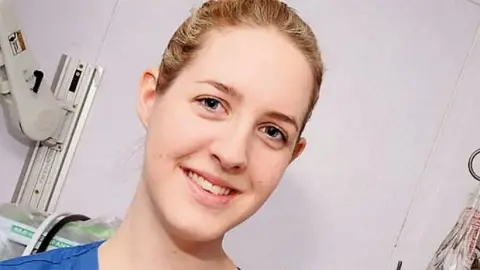 SWNS
SWNSDuring Letby’s trial, online forums and communities sprang up, where users analysed the evidence as the case unfolded. There were views on everything from the science, to the barristers’ performance, and endless speculation about Letby herself.
Very few of those posting opinions were at Manchester Crown Court to watch the trial in person. The majority were following media reports, tweets, and a live blog on the Chester Standard newspaper’s website.
The online commentary was voluminous – and often in breach of legal restrictions. The trial judge directed jurors not to go online, or conduct their own extra-curricular research, and the hearings continued without anyone being prosecuted for contempt of court.
After the verdicts finally came through last August, newspaper headlines screamed “Monster” and “Angel of Death”. But the view on the internet wasn’t always as condemnatory.
Sceptics appeared, including Richard Gill, a statistician in the Netherlands, who argued the data presented at the trial was flawed and used improperly. Sarrita Adams, a California-based biotech consultant, launched a campaign aimed at critiquing the science in Letby’s case. Her website invites donations and describes itself as “the first organisation dedicated to fighting for a new trial for Lucy Letby”.
They weren’t the only ones. There are podcasts, blogs, websites and videos dedicated to the same topic. Some delve into the arguments presented by the defence about air embolism, and the expertise in the case. Others stray into different territory – statistics, or questions about other areas of science which Letby’s team have steered clear of.
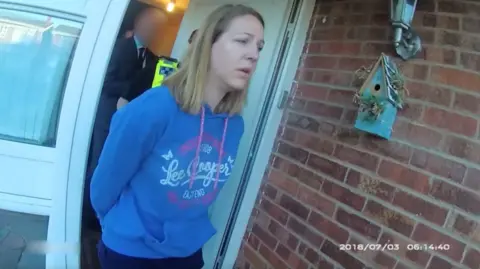 Getty Images
Getty ImagesIt was notable how the sceptics’ arguments weren’t incorporated in the defence submissions at the Court of Appeal. We understand some of those campaigning for Letby’s freedom have made repeated attempts to contact her, her inner circle, and her lawyers.
But why the mismatch between the arguments raging online and those in the courtroom? It may be that Letby’s team has looked into the sceptics’ arguments and decided they don’t check out and wouldn’t stand up in a court of law.
But that’s not the only possibility.
Letby and her legal team didn’t have carte blanche to make any arguments they wanted in support of her request for permission to appeal.
Criminal appeals are not “a second bite of the cherry”, as lawyers sometimes put it. The only way Letby would be allowed to appeal her conviction was if she could show the judge in her original trial had made a legal mistake, or there was new evidence that, had it been available at the time, might have led the jury to different verdicts.
That meant the range of arguments Letby’s legal team could present was limited. Cherry-picking the best of the online arguments was never an option.
It’s also important to remember the one person in control of the defence case was Letby herself. Her lawyers advised her, but they were required to act according to her instructions. Letby has used the same local Chester solicitor since her arrest in 2018, and has been represented by the same barristers throughout both trials and the appeal. Whether she’s aware of the community campaigning in her name or not, she hasn’t signalled she’s unhappy with her lawyers’ strategy.
Those who’ve continued to maintain the nurse’s innocence are undeterred. They seem to be increasingly vocal and at the first hearing of the Thirlwall Inquiry, which will examine the way the hospital dealt with Letby, barristers representing the parents of the babies spoke of the anguish these campaigns have caused.
“The modern age has brought a proliferation of conspiracy theories which sprout, spread and fester on social media blogs and on websites,” Peter Skelton KC said. “Lucy Letby’s crimes, in particular, continue to be the subject of such conspiracies, some of which are grossly offensive and distressing for the families of her victims.”
The families’ lawyers argued, unsuccessfully, for the public inquiry to be live streamed when it gets underway in Liverpool in the autumn.
“It is well known that the case has generated considerable public interest and that conspiracy theories have grown around it,” Richard Baker KC said. “They are toxic, they are often ill-informed, and they ultimately grow in the shadows. The more light that we put on this Inquiry, the less space there is for speculation and conspiracy.”
It probably hasn’t helped that much of the reporting of the Letby case over the last year has been restricted by court orders, to protect the retrial. It has left an information vacuum – one the internet has happily filled.
 Helen Tipper
Helen TipperOn 10 June, 10 months after she was first convicted of murdering and attempting to murder babies, Letby was back in court for her retrial on one count of attempted murder.
Although there was a feeling of déjà vu – the same courtroom, the same lawyers, the same judge – there was something palpably different about the atmosphere.
During the first trial, which had lasted for nearly a year, only five or six members of the public turned up with any regularity. They sat quietly in an annexe alongside police officers and experts who couldn’t fit into the main room.
At the retrial, up to 30 people crowded around the courtroom door each morning, jostling to be allowed in. Court ushers did their best to maintain order, asking them to move aside to allow the baby’s family, police officers and journalists in, but then they were allowed to take their places in the public gallery.
Katie, Leah and Richard were in court throughout the first trial and came back for the second. They’ve asked for their names to be changed because they say they’ve felt intimidated by some of the people who’ve turned up this time around.
“People come literally from all over, we’ve had people come from the USA and Brazil,” Katie says.
“They’re not interested in listening to the arguments – they just want to be in that court,” Leah adds. “Then halfway through they’re trying to get up and leave because they realise it’s quite dry, it’s quite tedious.”
They maintain it’s important for members of the public to be allowed to observe trials. Richard, who had never been to one before, says he committed his time to following the Letby trial because of its complexity.
“To really understand the case, I think you have to be there to listen to it and absorb as much of it as you can.”

BBC Action Line
This is a distressing case so if you, or someone you know, need help after reading about it, the details of organisations offering assistance can be found on the BBC Action Line website.

Not everyone was there to listen carefully. A man handing out flyers about judicial corruption was asked to leave. Court ushers had to remind someone else not to record the hearing. And there was shouting and tears when competing views were aired outside in the corridor. But if the lack of decorum inside the courthouse felt new, it was as nothing compared to the invective raging online.
Reporters and even witnesses found themselves being trolled and accused of bias and dishonesty. There were two battles – the traditional courtroom duel of prosecution v defence; and the information war going on in parallel.
Where will this all end up?
“I’m not guilty of what I’ve been found guilty of,” Letby said at her retrial. But having been denied permission to appeal, she’d have to come up with startling new evidence or arguments to have a chance of overturning her convictions. That won’t stop the debate though.
There could be further criminal prosecutions – Cheshire Police is still investigating Letby’s career. And the public inquiry, which starts in September, will examine the wider fallout, interrogating hospital managers about the way they handled doctors’ concerns.
We watched Letby as closely during her retrial as we had throughout the 10 months of the first prosecution. She was readier to catch our eye – looking up at the public gallery, and glancing across to where the baby’s family was sitting. She often blinked rapidly and clutched a furry stress-toy under the desk of the witness box. When she gave evidence, she spoke in the same neutral, clipped tone as before, betraying little emotion.
These were intriguing little details, but they seemed to conceal more than they revealed. Even after two trials, questions about the nurse’s character, motive, and psychology are still unanswered.
Lucy Letby remains an enigma.





